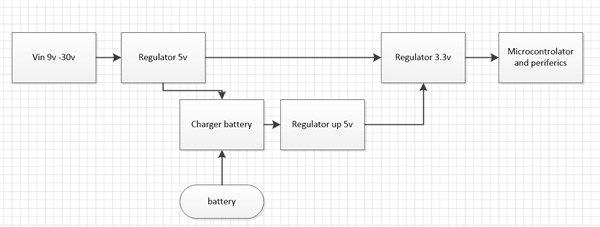Other Parts Discussed in Thread: TPS630250, BQ25180, BQ24079, LMR51430, BQ25181, BQ25180EVM
Hello Texas Instruments community!
I am redesigning a device and would like your help.
These are the requirements:
10Vdc – 30 Vdc input voltage (for vehicle use)
Voltage outputs 3.3v (1A) and 3.8v (2A).
I require the use of a 3.7v 250mA (max 1000mA) backup battery, so far I have used the bq24070 regulator (but if you have a better option I would appreciate seeing the recommendations)
The current design makes use of many regulators for its operation, and I would like to reduce the number of components that the regulation stage has, in addition to making use of components that are currently in stock on the market.
This is the current design.

The LMR2360 is used as the main regulator, with which the output is regulated at 5v. This regulator is currently out of stock.
1. I would like to get a replacement for another regulator with a smaller size to use as the main regulator.
The BQ24070 is used as a battery charger and backup system. This regulator requires many components, and I understand that it is designed for batteries with a higher capacity than the one currently being used.
2. Do you have any recommendations to replace this component?
I use the TPS360250 regulator to generate the 3.3v that the system requires, because the microcontroller that feeds it only supports a voltage of 3.3v - 3.6v.
I also use a voltage supervisor (TPS3899DL30DSER) to sense the battery and disable the TPS630250 regulator. but i also get a problem: when the supervisor cuts off the voltage because it is below the limit, the battery runs out of charge and the voltage rises, which causes the supervisor to enable the regulator and turns the microcontroller back on (and repeats this cycle until the battery is fully discharged).
3. Do you have any recommendations to treat this problem? I don't want the battery to fully discharge, is 3 volts too low a voltage for the battery?
4. Lastly, which scheme is more effective (recommended) the one currently being used or the one attached below.

Thank you for your time and I look forward to your comments.


